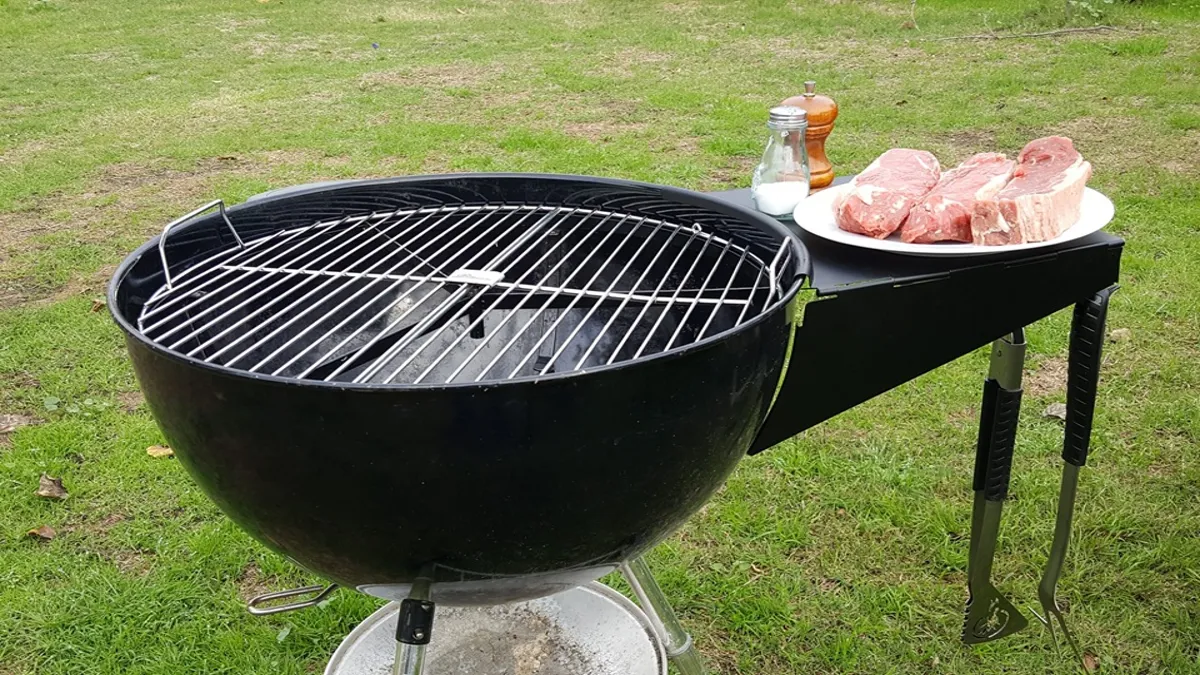Few things say “Aussie weekend” like firing up the barbecue for a feed with family and mates. Whether you’re cooking up snags, burgers, or a slow-roasted lamb shoulder, keeping your BBQ in top shape isn’t just about pride—it’s essential for better cooking, a longer-lasting unit, and a safer grilling experience.
If you’ve invested in the Ultimate Weber Kettle BBQ, it deserves proper care and maintenance to match its reputation. Here’s your go-to guide for keeping your kettle BBQ clean and ready for action, season after season.
Why Regular Cleaning Matters
Leaving old grease, ash, and food residue to build up doesn’t just look bad—it impacts taste and function. Burnt-on grime can create flare-ups, affect heat distribution, and even damage parts over time. Regular maintenance keeps your BBQ performing at its best and helps prevent rust or wear, especially when used frequently.
A little attention after each cook, combined with seasonal deep cleaning, ensures your BBQ stays in excellent condition for years to come.
Tools You’ll Need
Before you dive in, gather the following:
- A grill brush (preferably stainless steel bristles)
- Mild dish soap
- Bucket of warm water
- Scraper or putty knife
- Sponge or soft cloth
- Cooking oil spray
- Heat-resistant gloves (optional)
- Metal ash container (for safe disposal)
These basics will cover most cleaning needs and help avoid any accidental damage to the surface or inner workings of your kettle.
After Each Cooking Session
1. Burn Off Residue
Once you’ve finished cooking, close the lid and turn the heat to high for 10–15 minutes. This burns off leftover grease and food bits, much like a self-cleaning oven. Once the grill is slightly cooled, scrub the grates with your brush to remove any remaining debris. Doing this after every session helps keep buildup under control and makes deeper cleaning much easier.
2. Remove Ash Safely
After your BBQ has completely cooled, remove and empty the ash catcher. If your unit has a bottom vent system, open it fully to let loose ash fall into the tray. Ash left inside can absorb moisture and lead to rust over time. Always use a metal container to dispose of ashes, as embers can stay hot longer than you think.
Monthly (or Every Few Cooks)
3. Deep Clean the Grates
Every few barbecues, take time to soak the cooking grates in warm, soapy water for about 15–20 minutes. Then scrub them thoroughly using your grill brush or sponge. Rinse and dry completely before putting them back.
If you have cast iron grates, coat them lightly with cooking oil before reassembling—this protects against rust and keeps them seasoned for future use.
4. Clean the Lid and Bowl
Grease and smoke residue often build up on the inside of your lid and bowl. Use a scraper or putty knife to gently remove thick grime. Then, wash with soapy water using a sponge or soft cloth. Rinse and dry thoroughly. Avoid strong chemicals, as they can damage the enamel coating or affect the taste of your food.
For the outside of the BBQ, a quick wipe with a damp cloth and mild soap will keep it looking good. This removes dust, fingerprints, and grime without scratching the finish.
5. Check the Vents
The vents on your Weber kettle BBQ control airflow and temperature, so it’s important they stay in working order. Make sure the top and bottom vents open and close easily. If they feel stiff or blocked, clean them with warm soapy water and a soft cloth.
Seasonally
6. Oil Moving Parts
Once everything is dry and reassembled, apply a light spray of cooking oil to any moving parts—hinges, vent controls, and the lid handle pivot. This helps prevent rust and keeps things moving smoothly. Wipe away any excess with a cloth to avoid attracting dirt or bugs.
Inspect your BBQ for any signs of wear and tear, especially rust spots. If needed, touch up chipped areas with high-heat paint designed for barbecues.
7. Store Smart
If you’re not using your BBQ for a while, or during wetter months, store it in a sheltered area. A weatherproof cover is your best defence against rain, dust, UV damage, and salt air—especially if you live near the coast.
Keeping it covered when not in use can dramatically extend its life and reduce the need for deep cleaning later on.
Final Thoughts
Next time the weather’s fine, and the esky’s full, you’ll be ready to fire up the BBQ with confidence. A little regular cleaning and maintenance goes a long way—ensuring better flavour, safer cooking, and a barbecue that stays reliable year after year.
Your Weber kettle BBQ is more than just a cooking tool—it’s a centrepiece for Aussie gatherings, big or small. Keep it clean, keep it maintained, and it’ll reward you with great meals and great memories.

